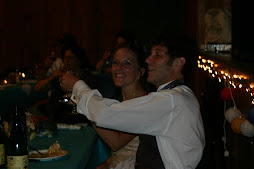




An NGO comes and delivers food to the young men who come to our “Drop in Center” on a daily basis.
There is a different meal each day of the week but the weekly schedule is the same. Monday – Rice and Yellow Dahl, Tuesday – chapatti and Yellow Dahl, Wednesday – Rice and Mung Beans, Thursday- Sweets and Something that I don’t know the title of, You guys get the picture.
The attendance varies at our drop in center so sometimes the food is completely consumed and sometimes we have 20 pounds of left over rice and dahl. What to do with this food. They usually throw it out if no one wants to eat it. As a huge advocate for not wasting food I thought about what could be done and many questions arose.
I walk by 100 of beggar each day. Surely they could use the food. But then also there are 1000’s of working class people who work all day for Rs 300 ($7.50) and wouldn’t they like a free dinner every now and then?
India’s poverty line is based on the amount of money it costs to by 2,400 calories of food in a rural area and 2,100 calories of food in an urban area. The line is set at Rs 300 ($7.50) in rural and Rs 570 ($14) in urban areas a month.
The problem lies in the fact that this line was set on the prices of food in 1976! Needless to say food prices have risen in the past 32 years! India is currently reexamining this issue and will hopefully adjust the poverty line to more accurately depict the cost of food in this day and age.
Back to the dilemma- there 1000’s of working poor. Working all day for about Rs 120 ($3). Surely they deserve the food more than the beggar on the street pulling in Rs 400 ($10) per day? Right? The worker hasn’t given up, he is contributing to society, he is earning a wage, albeit it is extremely low. Where as the beggar is just sitting on the ground and has given up.
I would much rather give it to a person who worked that day and wants a free dinner- let him keep the Rs20 in his pocket for maybe a cold ice cream that he can’t find enough money for in his everyday budget. Or maybe he could save it and use it towards a new pair of sandals because his sandals blew out last week and has been shoeless since. But these people are sometimes hard to find. They are working while I’m trying to give the food out.
A young man and I went up to a man who was sorting trash. We asked if he was hungry and he said yes. We had nothing to put the food is so we kind of stared at each other until we realized this could not happen and went on our way. It was sad.
Then we came to a group of 5 ladies with about 3 small children among them. They were obviously beggars. They had bowls and news paper to put the food in.
So the question I ask is this?
Is it better to waste the food then to give it to a beggar who has given up on the idea of trying to work? What is this young mother teaching their child? We have seen parents encourage their children to come up to us in train and bus stations to beg from the “rich white people.” What type of values and lessons are being instilled in this small helpless 5 year-old?
This is the conclusion I have come up with- I can’t let the food go to waste so I have tried to first find someone who made an honest living that day, if I can’t find someone who fits that description I then give it to beggars. To off set the fact that I feel I am partially responsible and enabling this beggar to stay in his current state I will only give food to a beggar once. This is what I feel is okay to do.















